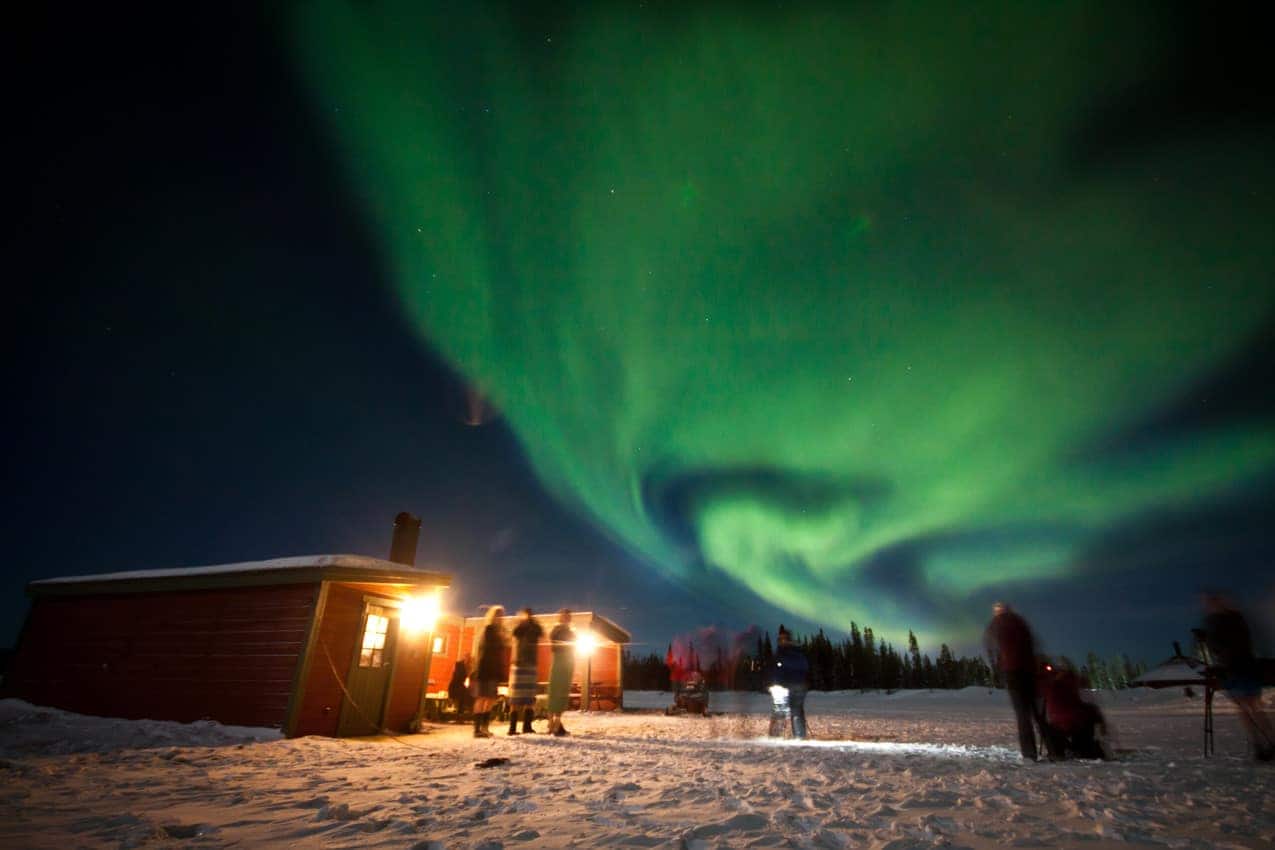
Inside a Microclimate, these Beloved Norway Islands Beckon all Year Long
By Rachel Kurlander
![]() When I first heard about the Lofoten Islands, an archipelago in Northern Norway located 200 kilometers north of the Arctic Circle, I was somewhat skeptical of its viability as a vacation spot, let alone one that was suitable for outdoor activities.
When I first heard about the Lofoten Islands, an archipelago in Northern Norway located 200 kilometers north of the Arctic Circle, I was somewhat skeptical of its viability as a vacation spot, let alone one that was suitable for outdoor activities.
For perspective: Lofoten is farther north than Iceland and farther north than almost all inhabited parts of Canada or the US (the largest community in the western hemisphere north of Lofoten, Barrow, Alaska, has only 4,000 people).
And you’re telling me to travel here? Do a quick Google image search, and you’ll understand why.

Despite its Arctic locale, the Lofoten archipelago benefits from a unique microclimate created by the Gulf Stream, meaning that you can actually hike, swim, fish, dive, surf, and kayak most months out of the year.
This, coupled with the fact that the islands fly well below the radar due to their remoteness, makes Lofoten Norway’s best-kept secret.
Breathtaking vistas dotted with cragged peaks rising above the Arctic ocean, deep fjords surrounded by quaint, colorful fishing villages and the chance to see the midnight sun or the northern lights make the Lofoten Islands the ultimate arctic getaway.
Getting to Lofoten
As of Spring 2017, Widerøe Airlines has direct flights (starting from $140) from Oslo to Svolvær (Austvågøya island) and Leknes (Vestvågøya island). A second option is to fly from Oslo to Bodø (starting at $65), a town located on mainland Norway, and take a ferry to Svlovær or Moskenes (Moskensøya island).

The ferries run several times a day (depending on the season) take between 2-4 hours and start at about $30/person. The views from the ferry are spectacular, so I would recommend this option for those who are not pressed for time. You can find a ferry schedule (in Norwegian) here.
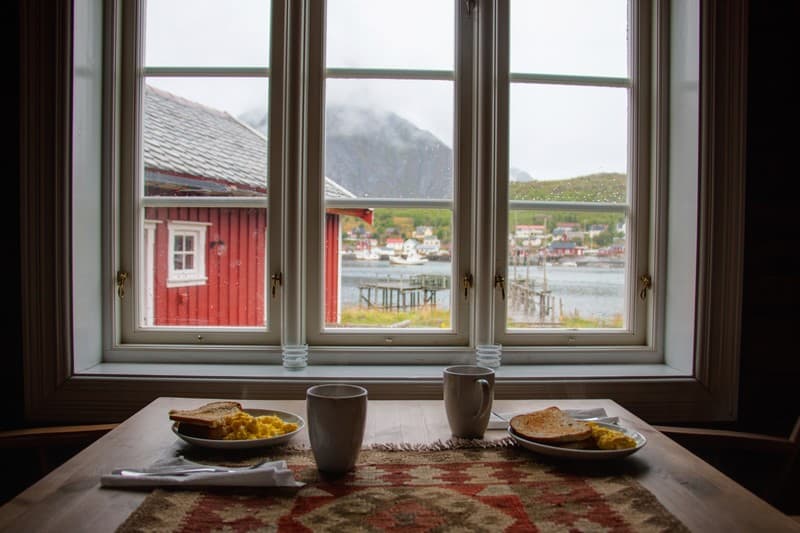
For those planning on renting a car, it’s also possible to fly from Oslo into Harstad-Narvik Evenes airport (starting at $65) and drive to the islands, which could take anywhere from 2.5-5 hours, depending on how far down the archipelago you’re going.
As an example, my route to Lofoten went like this: fly from Oslo to Bodø, spend the night in Bodø, take a ferry from Bodø to Moskenes the following morning.
The best option for you will depend on your schedule, your budget, and which island(s) you’d like to visit.
Where to Go:
The Lofoten archipelago is made up of five main islands: from East to West, they are Austvågøya, Gimsøya, Vestvågøya, Flakstadøya and Moskenesøya. All of the islands are connected by the E10, a road that runs the full length of the archipelago, so it’s possible to see every island by car (or bus).
Very briefly, Austvågøya Island is home to Svolvær, a larger town with shops, restaurants, and galleries and Kabelvåg, a medieval village. Gimsøya Island is the smallest of Lofoten’s islands and has large areas of protected wildlife.
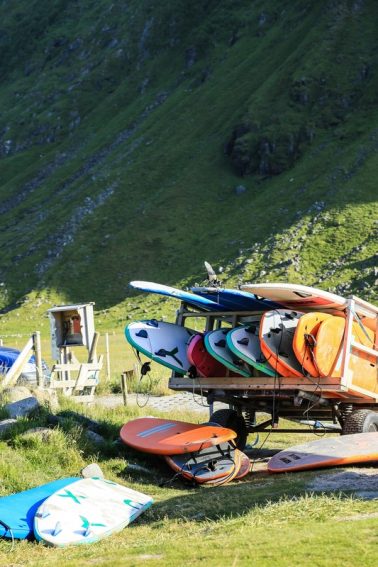
On Vestvågøya Island you can find some of Lofoten’s best beaches, like Unstad, Uttakleiv, and Haukland, while Flakstadøya Island has many museums and a thriving art scene. Moskenesøya Island best known for Reine, often recognized as the most beautiful village in Norway and one of the most beautiful villages in Europe.
You can find incredible hikes and outdoor experiences on every island, so I would recommend poking around the Lofoten tourism website here to decide which island(s) are best for you.
What to Do:
Lofoten is the adventure lover’s dream and offers a wide range of activities from whale watching to cycling to diving to even midnight golfing during the summer months.
In Unstad (Vestvågøya island) you can find the world’s northern-most surf school, where you can rent boards, take lessons or enroll in weeklong surf camps –talk about extreme!
Learn more about Unstad Arctic Surf’s programs here. Sea kayaking is very popular, and you have the option of taking introductory kayaking lessons, going on a kayaking tour, or simply renting your own for the day (the currents, however, can be very strong, so some companies won’t let you go out on your own unless you’re an advanced kayaker).
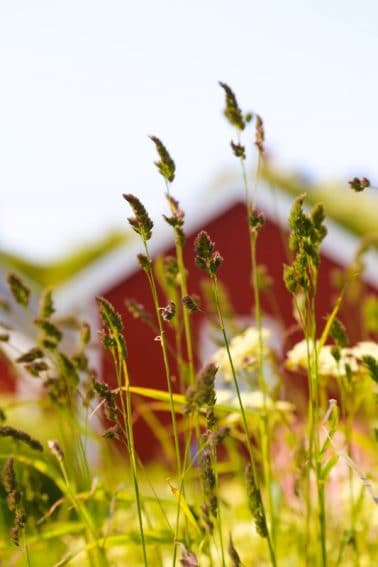
Most towns will have their own shops and tour operators, but if you’re only in Lofoten for a few days try to book in advance, since spots fill up quickly and rentals go fast.
A great kayaking route is around the Reinefjorden (Moskensøya island) but other options include tours from Svolvær and Kabelvåg here. Any trip to Lofoten would be incomplete without hiking, and you can read about some of the best ones here.
Getting Around:
The best way to get around Lofoten is undoubtedly by renting a car (or camper van). This gives you maximum flexibility, and it’s virtually the only way to see the islands off of the E10 (the road that runs the full length of the archipelago).
The downside, of course, is that this is also the most expensive way to travel, and unless you’ve budgeted several hundred dollars a day for car rentals, it may not be a realistic option.
There is the possibility of foregoing pricey rental car companies at the airport and opting to rent a car from a garage on the islands, but this is more of a gamble.
If you chose not to rent a car, there is a local bus (schedule here, note that buses don’t run on Sundays) that, with the right amount of planning, gets you from A to B just fine.
You’re somewhat more restricted by where you can go, but there are plenty of amazing hikes and picturesque villages located just off of the E10, making the bus a perfectly fine alternative.
For those wanting to venture off the beaten path (or who don’t want to wait around for the bus), it may be necessary to supplement this option with hitchhiking, but I found hitchhiking in Lofoten to be very easy and perfectly safe.
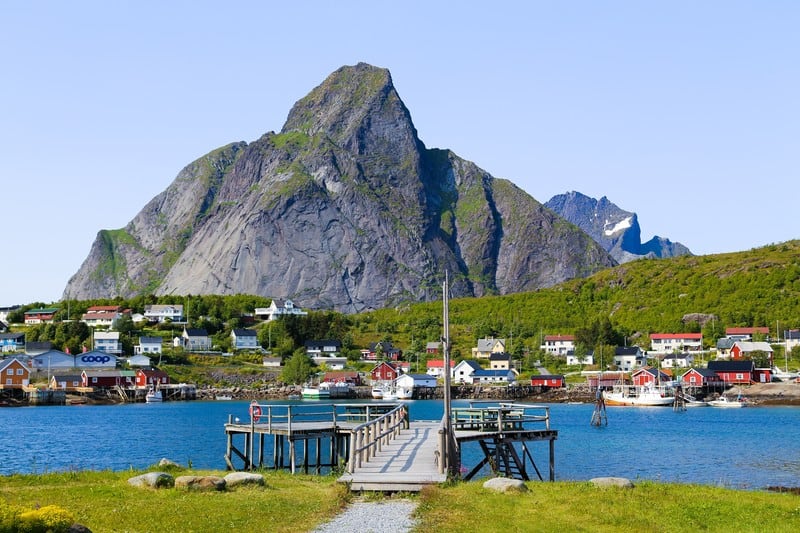
When to Go:
Although the Lofoten Islands are located far north of the Arctic Circle, they have their own microclimate created by the Gulf Stream and as such experience the largest positive temperature anomaly in the world relative to their latitude. Believe it or not, four distinct seasons occur on the islands.
Temperatures in the summer (June-August) can reach 27°C, while winter temperatures (November-March) usually hover around 0°C, but can drop below a frigid -10°C.
Summer is the high season, meaning that there are more tourists (by Lofoten standards, that is) but also that the tourism industry is running on all cylinders, making it that much easier to find accommodation and book tours/activities.
Furthermore, traveling to Lofoten from the end of May– the beginning of July comes with the added perk of seeing the midnight sun, where the sun never sets but rather hovers on the horizon until rising again the next morning.
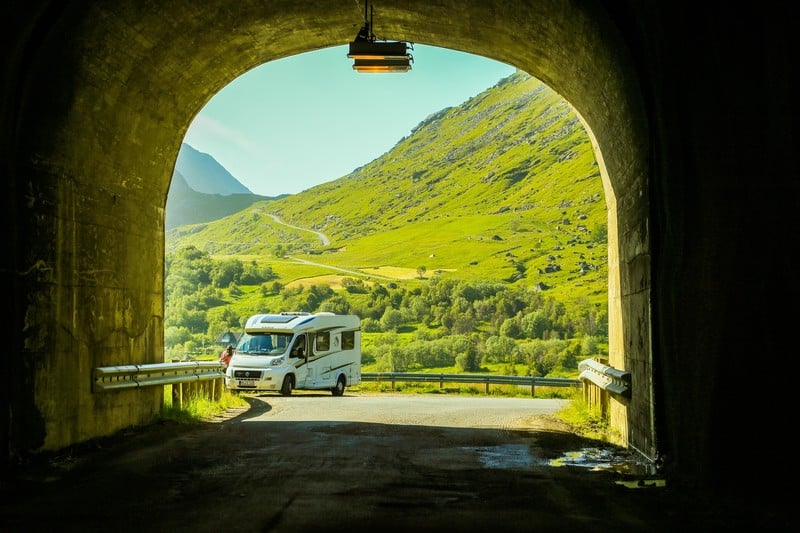
On the flip side, if the northern lights are what you’re after, travel sometime between September and March (although be warned that November, December, and January are especially dismal months on the islands with little to no sunlight).
Spring is a short season and an inopportune time for hiking, so consider waiting a few months if your plan is to hit the trails. Autumn, while rainy, can still be fairly warm and bright, and the fall colors make for some breathtaking scenery.
Lofoten Accommodations:
Camping is truly the best way to experience the Lofoten Islands, and Norway’s ‘Freedom to Roam’ laws mean that you can pitch a tent anywhere in the outdoors (for free, of course), so long it’s not on someone’s private property.
While this is definitely the most cost-effective and adventurous way to camp, there are also plenty of campgrounds that usually have electricity and showers for about $13/night.
Those who prefer not to camp can stay in an expensive yet authentic Lofoten experience. The bright cabins used to house Lofoten’s fishermen, but many have since been restored and converted into guesthouses for tourists.
Prices range anywhere from the cheap, more rustic Rorbuer to larger and more expensive accommodations, but those on a budget should note that Rorbuer can often fit up to four (or more) people and almost always have their own kitchens, making it a reasonable budget option for groups.

There are plenty of Rorbuer throughout the islands, although the majority of (and more authentic) cabins are found in the West, in villages like Reine and Å.

More Information:
For more information on the Lofoten Islands and planning your next getaway, I would highly recommend these two websites:
The official website of the Lofoten tourism board
http://www.68north.com/: a website started by photographer Cody Duncan, an American expat who’s been living in Lofoten for the past 10 years. An excellent source of information on all things Lofoten and an especially useful tool for planning hikes.

Rachel Kurlander lives in Meriden, Connecticut. She graduated from Wesleyan University in 2016 and has been actively traveling the world since.
Eurail Passes: What to Know about Buying a Europe Train Pass
- Saudi Arabia Might Be Your Next Getaway Spot - April 23, 2024
- Mongolia, the Land of Eternal Blue Sky - April 20, 2024
- These 9 U.S. National Parks Require Reservations in 2024 - April 17, 2024





